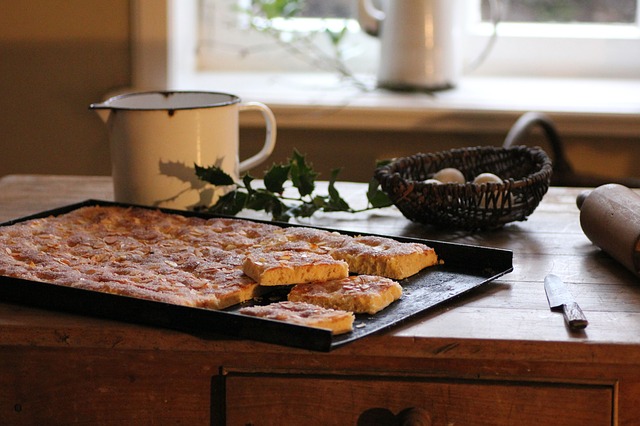Don’t you love all of the foods we cook in the winter time? All of the cookies and heavy stews and sauces. It’s so great, the ambiance those foods provide. But these foods tend to not be the most heart healthy foods. If you’re thinking about your health, but also want the sights and smells from your favorite winter foods, then you’ll want to follow these five steps to nutritious winter baking.
Five Steps to Nutritious & Traditional Winter Baking
1. Get your fruits and veggies into your baking. Adding nutrient-rich foods like spinach, zucchini, avocado, blueberries, raspberries, and apples will make your winter baking more nutritious. These foods are easily added to muffins, for example. And with apples in season an apple muffin tastes great. Don’t discount those vegetables either. Zucchini makes a great bread or muffin.
2. Use flax meal or chia seeds. These seeds are a great source of fiber, nutrients and Omega-3 fatty acids. You can use this as an egg substitute in your baking. This isn’t a perfect egg substitute, though, so for light airy desserts such as angel food cake or many pastries this isn’t the best option. However, for hearty winter baking like breads and brownies this will make for a much better substitute for an egg.
3. Reduce the sugar. Yes, we know, the best part of the baked good is the sweetness. And beyond that, sugar does do many other things for baking which you don’t want to lose. However, it can still be achieved by using some different and healthier substitutes. Here are some great ways to substitute with some natural sweeteners.
- Honey – Use ¾ cup plus 1 tbsp of honey per 1 cup of sugar. Reduce the other liquid ingredients by 2 tbsp when doing this, though. Honey makes things moist and dense and will brown faster. So this is better suited in cookies as a sugar substitute.
- Maple syrup – When baking, go for the Grade B which is thicker and darker in color than Grade A syrup. Replace the sugar in recipes with ¾ cup for every cup of white sugar and reduce the liquid ingredients by 3 tbsp.
- Molasses – This isn’t as sweet as refined sugar. And it will make baked goods darker and with a strong taste. Use 1–1/3 cup of molasses for every cup of sugar and reduce the liquid by 5 tbsp in the recipe. But because molasses is acidic, you will also need to add an extra ½ tsp of baking soda for every cup of molasses used.
- Use fruit juice concentrate – This makes for a really great sugar substitute and adds an interesting taste to baking. Use ¾ cup for every 1 cup of sugar and reduce the liquid by 3 tbsp.
4. Reduce the fat with a fruit puree or low-fat yogurt. You don’t want to remove all of the fat, though – some fat is helpful and healthy as it helps us digest food slower and keeps us full longer. Plus, fat just makes things tastier. But replacing the butter or oil with applesauce and pumpkin puree is a great way to bake healthier and still maintain some moist and tasty baked goods. If this frightens you, then just use 2 eggs whites in place of every whole egg to reduce the fat in baking.
5. Use low-fat dairy products. When a recipe calls for sour cream, use the low-fat version of it instead. Use 2% milk instead of whole milk or cream. You likely won’t even notice a difference with these changes.
Baking with these recommendations will make it much easier to get into that swimsuit once the winter is over. So try it out the next time you’re baking a cake and let us know how it goes.






